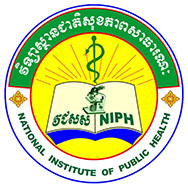Publications Detail
Determinants of the continuum of maternal health care in Cambodia: an analysis of the Cambodia demographic health survey 2014
BMC Pregnancy and Childbirth Jun, 02, 2021 Show PublicationIntroduction
Cambodia has achieved significant progress in maternal health, yet remains in the group of countries with the highest maternal mortality ratio in South-East Asia. Extra efforts are needed to improve maternal health through assessing the coverage of maternal health services as a continuum of care (CoC) and identifying the gaps. Our study aims to explore the coverage level of the Optimal CoC by (1) measuring the continuity of optimal antenatal care (ANC), skilled birth attendance (SBA) and optimal post-natal care (PNC), (2) identifying the determinants of dropping out from one service to another and (3) of not achieving the complete CoC.
Method
The study employed data from the Cambodia Demographic Health Survey 2014. We restricted our analysis to married women who had a live birth in the five years preceding the survey (n = 5678). Bi-variate and multivariate logistic regression were performed using STATA version 14.
Results
Almost 50% of women had achieved the complete optimal CoC, while the remaining have used only one or two of the services. The result shows that the level of women’s education was positively associated with the use of optimal ANC, the continuation to using optimal PNC and achieving the complete CoC. More power of women in household decision making was also positively associated with receiving the complete CoC. The birth order was negatively associated with achieving the complete CoC, while exposure to the mass media and having health insurance increased the odds of achieving the complete CoC. Household wealth consequently emerged as an influential predictor of dropping out and not achieving the complete CoC. Receiving all different elements of ANC care improved the continuity of care from optimal ANC to SBA and from SBA to optimal ANC.
